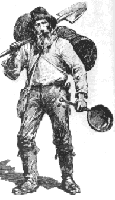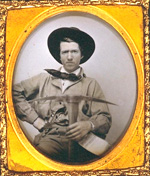California as I Saw It: First-Person Narratives of California, 1849-1900

The 190 works presented on this site—approximately 40,000 written pages and more than 3,000 illustrations—provide eyewitness accounts covering California history from the Gold Rush through the end of the 19th century. Most authors represented are white, educated, male Americans, including reporters detailing Gold Rush incidents and visitors from the 1880s attracted to a highly-publicized romantic vision of California life.
The narratives, in the form of diaries, descriptions, guidebooks, and subsequent reminiscences, portray encounters with those living in California as well as the impact of mining, ranching, and agriculture. Additional topics include urban development, the growth of cities, and California's unique place in American culture. A special presentation recounts early California history, and a discussion of the collection's strengths and weaknesses provides useful context for the first-person accounts.
